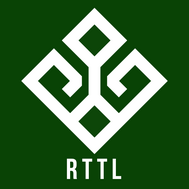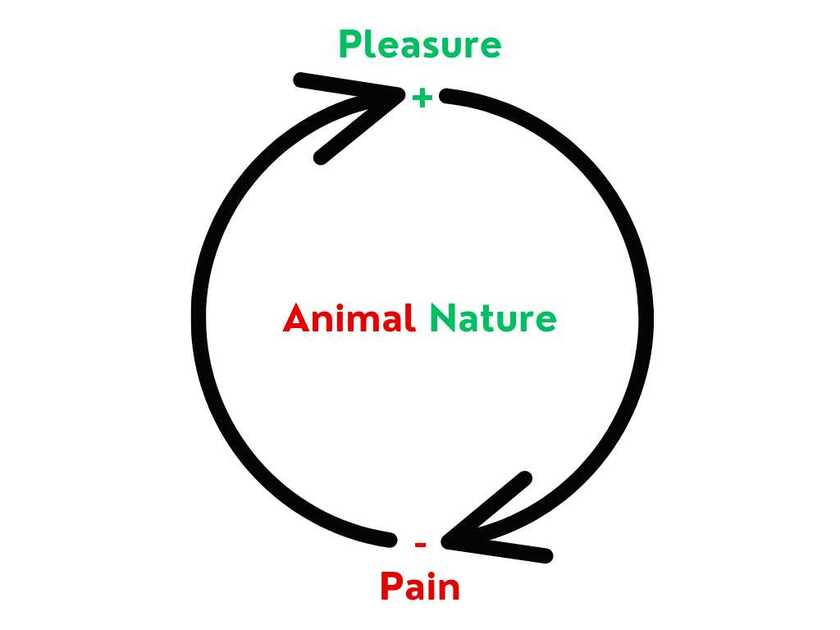
He also likes to discuss contemporary philosophy and science and is interested in putting together a scientifically comprehensive worldview that integrates metaphysics and traditional views of the soul.
Anthropology and ancient history are important as well and Aarvoll is interested in discussing theories of Atlantis, and alternative theories of human evolution and migration.
Wisdom Within — Chapter 36
To Believe and To Know
There is a great gulf between belief and knowledge. To believe is to trust in second-hand sources—in words spoken, in books written, in slogans repeated, in the images of screens and the echoes of authority. Belief rests on faith in another’s testimony, but it is not yet sight. To know, by contrast, is to stand face-to-face with the truth, to encounter it with the six senses, to live it in one’s own being.³⁷⁶
Consider a box of chocolates. If you have never opened it, but only read the label or listened to the descriptions of others, the most you can say when asked is, “I believe it tastes like this.” Your faith is built upon the words of others, but the sweetness is not yet yours. To know, you must break the seal, place the morsel upon your tongue, and taste it yourself. Then there is no room for doubt, for the experience is immediate, undeniable, beyond belief.³⁷⁷
Now consider something heavier, something that stains history with blood. On the battlefield you and your comrades witness a massacre in the midst of war. You hear the cries, you see the dead, you carry the memory in your bones. But the war is lost, and the victors bury their crimes with lies. Historians under their command rewrite the story, cleansing the pages, declaring that the massacre never occurred. Centuries pass, and those who come after, reading only the official accounts, say, “I believe history unfolded in this way.” Their trust rests on records, but not on sight. Yet you and your comrades, who stood in the dust and smoke, who saw with your own eyes, can say: “We know the record is false.” For no book can erase the truth that was carved into your memory.³⁷⁸
Extend this further, into the realm of the spirit. Imagine a monk who has given his life to meditation, who has sat in stillness for years, following breath into silence. One day, his consciousness breaks through the veil and enters the vast expanse of a reality beyond the physical. At first he trembles, overwhelmed by the strangeness. But he returns again and again, until he learns the paths of that greater world. Now when he is asked, “Do you believe there is more than this material life?” he does not answer, “I believe.” He answers, “I know.” For his knowing does not depend on scriptures or teachers or faith, but on direct vision.³⁷⁹
In the words of the great esoteric psychologist Carl Jung, when asked if he believed in God, he replied, “I do not believe—I know.” This is the essence. Belief leans upon others; knowledge rests upon the self. Belief is a candle lit from afar; knowledge is the flame in your own hand.³⁸⁰
To believe is just the beginning, but to know is the final consummation. One is borrowed light; the other is the sun itself.³⁸¹
Commentary
376: “There is a great gulf between belief and knowledge. To believe is to trust in second-hand sources—in words spoken, in books written, in slogans repeated, in the images of screens and the echoes of authority. Belief rests on faith in another’s testimony, but it is not yet sight. To know, by contrast, is to stand face-to-face with the truth, to encounter it with the six senses, to live it in one’s own being.”
This opening draws the fundamental contrast: belief relies on borrowed testimony, while knowledge arises only from direct experience. The gulf emphasizes the difference between mediated truth and lived truth.
377: “Consider a box of chocolates. If you have never opened it, but only read the label or listened to the descriptions of others, the most you can say when asked is, ‘I believe it tastes like this.’ Your faith is built upon the words of others, but the sweetness is not yet yours. To know, you must break the seal, place the morsel upon your tongue, and taste it yourself. Then there is no room for doubt, for the experience is immediate, undeniable, beyond belief.”
Here a simple analogy makes the point tangible: belief can only approximate reality, while knowledge requires direct taste. Sensory engagement transcends second-hand accounts.
378: “Now consider something heavier, something that stains history with blood. On the battlefield you and your comrades witness a massacre in the midst of war. You hear the cries, you see the dead, you carry the memory in your bones. But the war is lost, and the victors bury their crimes with lies. Historians under their command rewrite the story, cleansing the pages, declaring that the massacre never occurred. Centuries pass, and those who come after, reading only the official accounts, say, ‘I believe history unfolded in this way.’ Their trust rests on records, but not on sight. Yet you and your comrades, who stood in the dust and smoke, who saw with your own eyes, can say: ‘We know the record is false.’ For no book can erase the truth that was carved into your memory.”
This section grounds the idea in historical and moral gravity. The example of war crimes highlights how official narratives may conceal truth, yet lived knowledge remains unerasable in witnesses.
379: “Extend this further, into the realm of the spirit. Imagine a monk who has given his life to meditation, who has sat in stillness for years, following breath into silence. One day, his consciousness breaks through the veil and enters the vast expanse of a reality beyond the physical. At first he trembles, overwhelmed by the strangeness. But he returns again and again, until he learns the paths of that greater world. Now when he is asked, ‘Do you believe there is more than this material life?’ he does not answer, ‘I believe.’ He answers, ‘I know.’ For his knowing does not depend on scriptures or teachers or faith, but on direct vision.”
This moves from sensory and historical knowledge to mystical experience. The monk’s vision illustrates that spiritual realities, too, can be known directly through disciplined practice, not merely believed.
380: “In the words of the great esoteric psychologist Carl Jung, when asked if he believed in God, he replied, ‘I do not believe—I know.’ This is the essence. Belief leans upon others; knowledge rests upon the self. Belief is a candle lit from afar; knowledge is the flame in your own hand.”
Jung’s statement crystallizes the teaching: belief is external dependency, while knowledge is inward certainty. The imagery of light reinforces the contrast between borrowed and self-realized illumination.
381: “To believe is just the beginning, but to know is the final consummation. One is borrowed light; the other is the sun itself.”
The conclusion summarizes the ascent: belief as a preparatory stage, knowledge as fulfillment. Borrowed light points the way, but the sun of direct experience is the true end.
Wisdom Within — Chapter 38
The Feminine Chaos Experiment
Civilization is, at its core, the embodiment of the Masculine Order. It is the structure that rises from the soil of the Feminine Chaos, transforming wilderness into city-states, nature into culture. Without the Masculine Order, no civilization can endure; yet within its walls, the whisper of the Feminine Chaos has always found a way to creep in.³⁸⁶
In ancient Greece, we see the first tremors of this experiment. From the firm authority of city-states, hierarchies, and pragmatic law arose voices that sought liberty, equality, and the theorisations of a better world. Philosophy itself was born from this tension: rational Stoic foundations held firm, while the humanitarian currents of Socratic thought stirred beneath its marble columns.³⁸⁷
With the advent of Christianity, the experiment deepened. The Roman world embodied hierarchy, authority, and conformity—yet at its heart entered the message of humanity, equality, and inclusivity. The stern order of empire was gradually...

Wisdom Within — Chapter 37
The Animal Nature
All creatures of flesh move within a circle unseen. Pain awakens desire, desire seeks pleasure, pleasure fades into pain, and thus the wheel turns without end. This is the law of the beast: the endless hunger of the body, the restless thirst of the soul bound to matter. To flee from pain is to run toward pleasure, and to clutch at pleasure is to summon pain anew. This is the great cycle of Samsara, the prison of becoming.³⁸²
Yet there is a way out. Do not flee, do not chase. Sit instead within the flame. Embrace the pain as one clutches at a hidden pearl. Study it, breathe it, open to it in silence. For when the seeker rests in stillness amidst agony, the veil thins, the suffering dissolves, and behind its mask shines a deeper light. Only when this practice becomes life itself—habit, breath, devotion—does the animal nature wane.³⁸³
Consider two hounds on a leash, one named Dhukkha, the other Sukkha. Each pulls with savage force, dragging the master ...

Wisdom Within — Chapter 35
The Prakritis and Purushas
Within the order of Mīzānist society, two great communities arise: the Prakritis and the Purushas. The Prakritis labor in the fields of matter, tending to the political, economic, and social concerns of civilization. They are the builders of cities, the keepers of law, the artisans of wealth, and the guardians of civic order. Through their toil, the foundations of material life are laid, ensuring that every citizen is clothed, fed, and sheltered.³⁷⁰
Yet above the realm of matter shines another calling: the Purushas. These are those who renounce the comforts and ambitions of Prakriti life, forsaking luxury for a higher vocation. Their sole concern is the life of the spirit, the inner ascent of the soul toward truth and liberation. To enter their ranks is no light decision: one who becomes a Purusha cannot return to the worldly estate, for theirs is a path of consecration, lifelong and absolute.³⁷¹
Since the Purushas have renounced material striving, the ...












